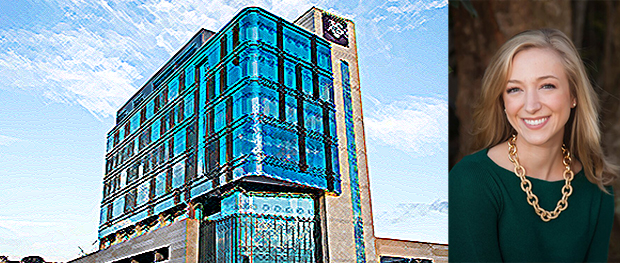
Meet the Teacher– Dental School Edition
GD: Hi Emily, thanks so much for taking the time to chat about your thoughts on dental education! Can you share with our readers a little bit about yourself and tell us about your position at the school?
EE: I’m originally from Louisiana and I graduated from Texas A&M University College of Dentistry in 2017. I’ve been in private practice for the past five years and recently started teaching at A&M this past school year. I’m a part-time clinical faculty member in the Comprehensive Dentistry department. I teach students in the clinic and work with them on restorative procedures. On days I’m not teaching at the school, I’m in private practice.
GD: What made you decide to become a dental educator?
EE: I knew I wanted to become a faculty member at the school starting in my D2 year. I remember sitting at my lab bench feeling overwhelmed with learning all the new techniques and projects. I began to feel more comfortable with dentistry after I started to work with my professors during lab and clinic hours. I really benefited from working with each of my professors and they helped shape me into the dentist I am today. I am really grateful for them and I really want to give that back to my students.
GD: What’s your favorite part about teaching?
EE: I love seeing the students’ curiosity and excitement about dentistry. I love seeing their spark for learning in the clinic. They’re excited and fresh and have a different perspective on dentistry since they’ve never seen it before. Their curiosity makes me excited about dentistry.
GD: What are the biggest differences in dental school education pre-pandemic and present day?
EE: The obvious thing is because of COVID. There are stricter criteria that the patients must meet to become a patient at the school in order to keep everyone safe. Likewise, requirements have changed to accommodate this and the shift in curriculum. Our whole program has evolved towards mimicking private practice as closely as possible. It is designed to allow the students to learn together through collaboration like in a group practice. Third and fourth year dental students are paired together in the clinic as partners. This allows for more opportunity to learn with a hands-on approach while assisting each other during procedures. I think this method is more conducive to learning because it allows for interactive communication between both student partners and their instructors.
GD: What are some of the resources you wish you had when you were in dental school that your students have today?
EE: The whole clinic is designed to look like private practice operatories. The students have access to the best equipment and chair setups. Each operatory has high-end patient chairs and electric handpieces. I think this will allow the students to be more prepared for what to expect in private and corporate practice settings. I noticed the patients also feel more comfortable and confident in their decision to come to the school when they see high-quality equipment.
GD: What are some things you would like to see evolve in dental education?
EE: I’d like to see more mentorship towards real world expectations for practice. I think this means we need more mentorship that extends beyond clinical skills. This entails preparing the students for what to realistically expect with their first jobs. I would also like to see more business driven classes for the students. Overall, I want all of my students to be prepared for the real world outside school.
GD: What is the biggest hurdle that dental students have to overcome as they become new graduates?
EE: I think being close minded and being comfortable with certain procedures. I encourage them to pursue all sorts of CE to expand their horizons in dentistry. I believe you have to be open to exploring all things out there clinically in order to be prepared for your first real world job. You learn so much while in dental school, but that’s just the beginning. Dental school is like your training wheels. I tell my students to find out what they’re interested in and focus on those few things. Go hard with the CE in that field.
GD: Has teaching changed the way you see dentistry or shaped your philosophy while working in your private practice?
EE: Definitely. It helps me think about dentistry in a different way. For example, through explaining procedures or concepts to students, I have to think about what we’re doing and break it down into what we do, how we do it and why we do it. It brings me back to the basics, which is beneficial because I think we sometimes forget those things when we do them day-in and day-out. I love teaching because I’m excited for the upcoming dentists. We have really talented students and they make me excited for the future of our profession.

